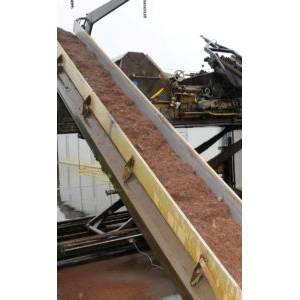Mycelium growth is the stage from the moment of spawning up to the moment the compost is removed from the tunnel and filled into the growing room. Or when mycelium growth in compost took place in the growing room, it continues until the moment the compost is covered with casing soil.
What happens during mycelium growth in the compost?
Spawn is mixed through the compost and the thread-like mycelium carried by the spawn grows and colonises the compost. Growth is initially slow, but after seven to eight days the mycelium grows exponentially. When the compost has been completely colonised by mycelium, growth stops of its own accord. This is indicated by the compost activity. Activity is the difference in compost and air temperature combined with the movement of air through the compost (in a tunnel) or around the compost (in a growing room). Abundant growth causes a lot of activity, sparse growth causes little activity.
Optimal duration of mycelium growth
There is a simple answer to what the optimal time for colonisation of the compost is. The compost is fully colonised at the moment that activity decreases. The precise length of time this takes varies per system, season and type of compost. Generally speaking the optimal time is 16 to 19 days, but there are certainly also exceptions.
Colonisation in tunnels, versus colonisation in growing rooms
If the compost is colonised in the growing room, it is left there so the mycelium stays intact. This is a big difference compared with compost that is incubated in a tunnel. The compost in a tunnel is white because of the mycelium, while compost that is filled into a growing room is reddish-brown. There is hardly any mycelium to be seen, but it is present in the compost. If this compost is filled into a growing room, the broken mycelium threads fuse together again and grow. This creates a lot of activity.
Has the compost in the tunnel not been fully colonised, so the compost temperature has not decreased? Then once in the growing room, this compost will explode with activity, with a high risk of burnt (rotten) patches in the compost. The conclusion is that compost colonised in a growing room can be cased slightly sooner and with no problems than compost colonised in tunnels.
The longer the better?
To a certain extent, compost that is colonised and then has to wait a long period before anything is done with it becomes ‘lazy’. It shows low activity, which can lead to over-excessive mycelium growth. The compost no longer absorbs moisture, so not enough water is available for the mushrooms. The result will be a lower yield in the second flush.
Check the fan position setting
Longer incubated compost with a low moisture content (61-62%) than gives more problems than with a high moisture content (64-65%). Compost with a high moisture content absorbs water better, so if you unexpectedly have to leave the compost for longer in the tunnel. Also take a good look at the fan setting. Activity will decrease further, so you can probably also adjust the fan to a lower setting to prevent the compost from dehydrating too much.

Copyright © 2024 – All rights reserved
This website uses cookies to ensure you get the best experience on our website.